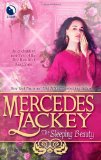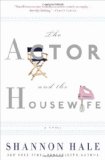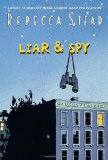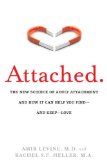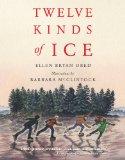 Shadowfell
Shadowfell
by Juliet Marillier
Alfred A. Knopf, New York, 2012.
Starred Review
Juliet Marillier’s writing is wonderful. She evokes ancient Celtic magic, and her heroines must face formidable odds with courage, wrestling over what’s right, and then holding onto that. This book reminded me greatly of her Sevenwaters books for adults, and that’s high praise.
At the start of the book, Neryn has been unable to keep her father from gambling away their last coins, and then he decides to use her as his stake. She’s won by a quiet stranger who gets her off the chancy-boat in time to see it destroyed by the king’s Enforcers, meaning her father’s certain death. The man doesn’t harm her. He asks her to travel with him:
“Listen,” Flint said, not meeting my eye now but stirring the fire with a stick, making sparks rise into the night. “You know, and I know, how hard it is to make a journey like that alone. Summer’s over and the Cull’s under way. You should be safe enough here for a day or so; this spot’s well off the known tracks. Tomorrow I have to attend to some other business, but I can be back before dark. It happens that I’m going north too. Travel with me until our paths part ways and you’ll have protection on the road.” He sounded diffident.
He had been kind tonight, in his brusque fashion. But everything in me rejected this suggestion. “I don’t know you,” I said. “I’d be a fool to trust you.”
“You’d be still more of a fool,” Flint said, “to go on alone. I said before, I want nothing from you. This is a simple offer of help. You need help.”
“Thank you, but I’ll do well enough on my own.”
Neryn does go on on her own, but the reader isn’t too surprised when Flint turns up again. We are surprised when we find out all the reasons Neryn has not to trust him.
Neryn has a “canny gift.” She can see and hear the Good Folk. But canny gifts are forbidden in Alban under the reign of King Keldec. Only those in the king’s close personal circle are allowed to use them. Others are killed, or their minds bent to serve the king. Neryn’s own Granny had her mind destroyed when the Enforcers attempted this on her.
But she’s heard of a place in the north, Shadowfell, where things are different, where Keldec’s arm doesn’t reach and canny gifts are welcome. However, to get there requires a long journey.
Along the way, Neryn learns that her own gift may be far more important, and far more powerful, than she realized. She also must wrestle with whom she can trust.
Now, in some ways Juliet Marillier’s romances follow a formula. There’s a very capable, strong man who’s a sinister stranger, but somehow the heroine gets in his power, and he proves to be gentle and kind, takes care of her when she’s sick, and doesn’t take advantage of the situation. Come to think of it, Sherwood Smith’s books also tend to follow this pattern, though in her books the stranger usually kidnapped or captured the heroine for some reason, but still ends up being kind and nurturing. I’m a little ashamed of myself that I inevitably find these books incredibly romantic, but what can I say? I really do. The heroine’s in a vulnerable position, at the mercy of someone who’s rough around the edges, but really good at what he does. But what he does is apparently at odds with everything the heroine holds dear. Should she trust him?
Summarized like that, I know I’m not expressing the magic of these books. Her language pulls you right into ancient Alban. Here are the first two paragraphs. See how quickly she weaves her spell and sets the stage!
As we came down to the shore of Darkwater, the wind sliced cold right to my bones. My heels stung with blisters. Dusk was falling, and my head was muzzy from the weariness of another long day’s walk. Birds cried out overhead, winging to nighttime roosts. They were as eager as I was to get out of the chill.
We’d heard there was a settlement not far along the loch shore, a place where we might perhaps buy shelter with our fast-shrinking store of coppers. I allowed myself to imagine a bed, a proper one with a straw mattress and a woolen coverlet. Oh, how my limbs ached for warmth and comfort! Foolish hope. The way things were in Alban, people didn’t open their doors to strangers. Especially not to disheveled vagrants, and that was what we had become. I was a fool to believe, even for a moment, that our money would buy us time by someone’s hearth fire and a real bed. Never mind that. A heap of old sacks in a net-mending shed or a pile of straw in a barn would do fine. Anyplace out of this wind. Anyplace out of sight.
The worst thing about the book is also the best thing. It’s the first book of a new trilogy. The story comes to a good stopping place, but it’s by no means finished at the end of this book. So I will snap up the next book as soon as it’s published, but I simply hate having to wait.
JulietMarillier.com
randomhouse.com/teens
Buy from Amazon.com
Find this review on Sonderbooks at: www.sonderbooks.com/Teens/shadowfell.html
Disclosure: I am an Amazon Affiliate, and will earn a small percentage if you order a book on Amazon after clicking through from my site.
Source: This review is based on a library book from the Fairfax County Public Library.
Disclaimer: I am a professional librarian, but I write the posts for my website and blogs entirely on my own time. The views expressed are solely my own, and in no way represent the official views of my employer or of any committee or group of which I am part.
Please use the comments if you’ve read the book and want to discuss spoilers!

